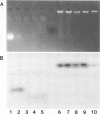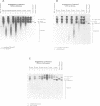Abstract
We have previously shown targeting of DNA to hepatocytes using an asialoorosomucoid-polylysine (AsOR-PL) carrier system. The AsOR-PL conjugate condenses DNA and facilitates entry via specific receptor-ligand interactions. In these studies, our objective was to determine if AsOR-PL conjugates protect bound DNA from nuclease attack. Double-stranded plasmid or single-stranded oligonucleotide DNA, alone or bound to conjugate, was incubated under conditions mimicking those encountered during in vitro and in vivo transfections. The results showed that complexed DNA was effectively protected from degradation by serum nucleases. Degradation of single-stranded oligonucleotides was inhibited 3- to 6-fold in serum during 5 hours of incubation. For complexed plasmids, greater than 90% remained full-length during 1.5 and 3 hour incubations in serum or culture medium containing 10% serum, respectively. Uncomplexed plasmid was completely degraded after 15 minutes in serum or 60 minutes in medium. In cell lysates, the conjugate was not effective in inhibiting endonuclease activity; plasmids were readily converted from supercoiled to open circular and linear forms. However, the resultant nicked forms were substantially protected from further degradation during one hour of incubation compared to plasmid alone. Under all conditions complexed DNA did not readily dissociate from the conjugate. Overall, for both single and double-stranded DNA, AsOR-PL conjugates conferred substantial protection from nuclease degradation.
Full text
PDF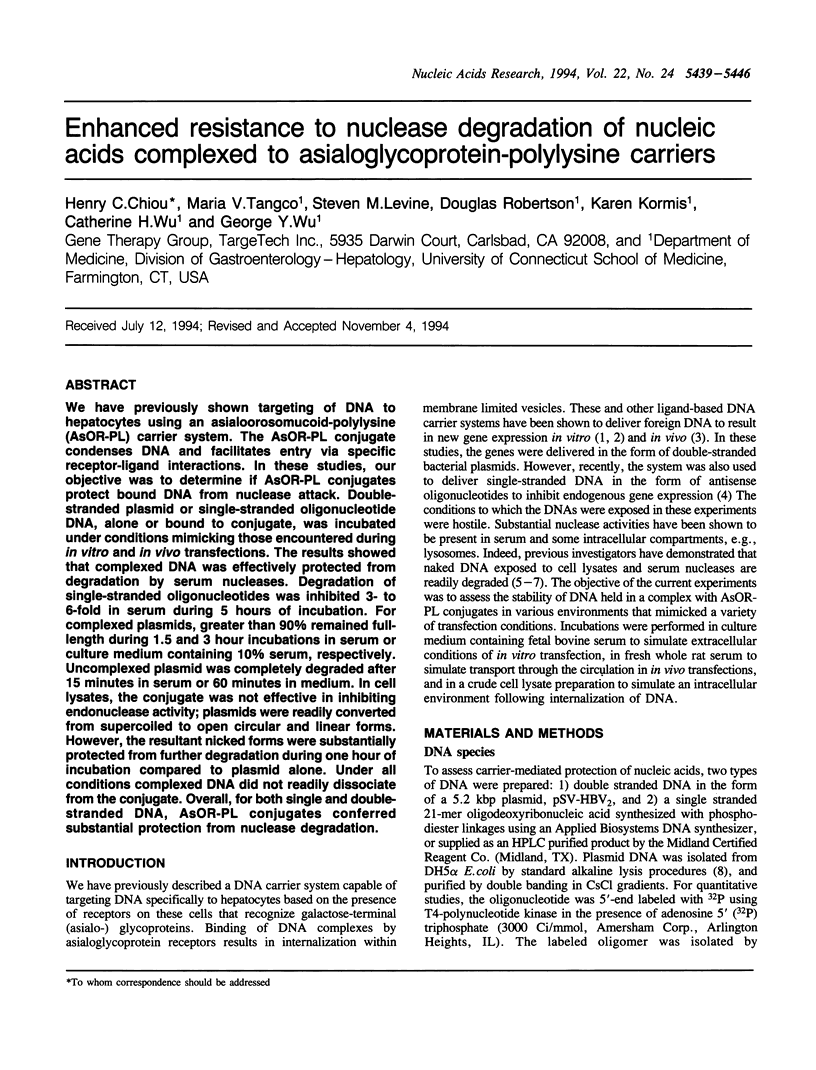
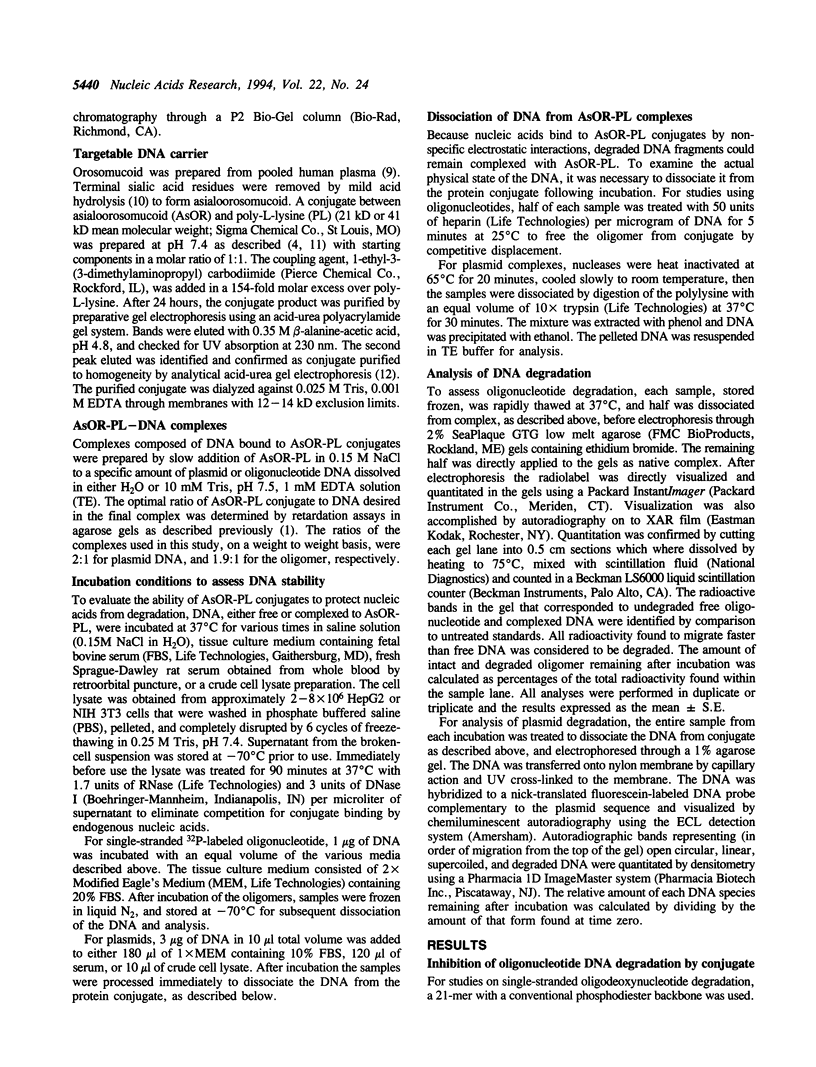
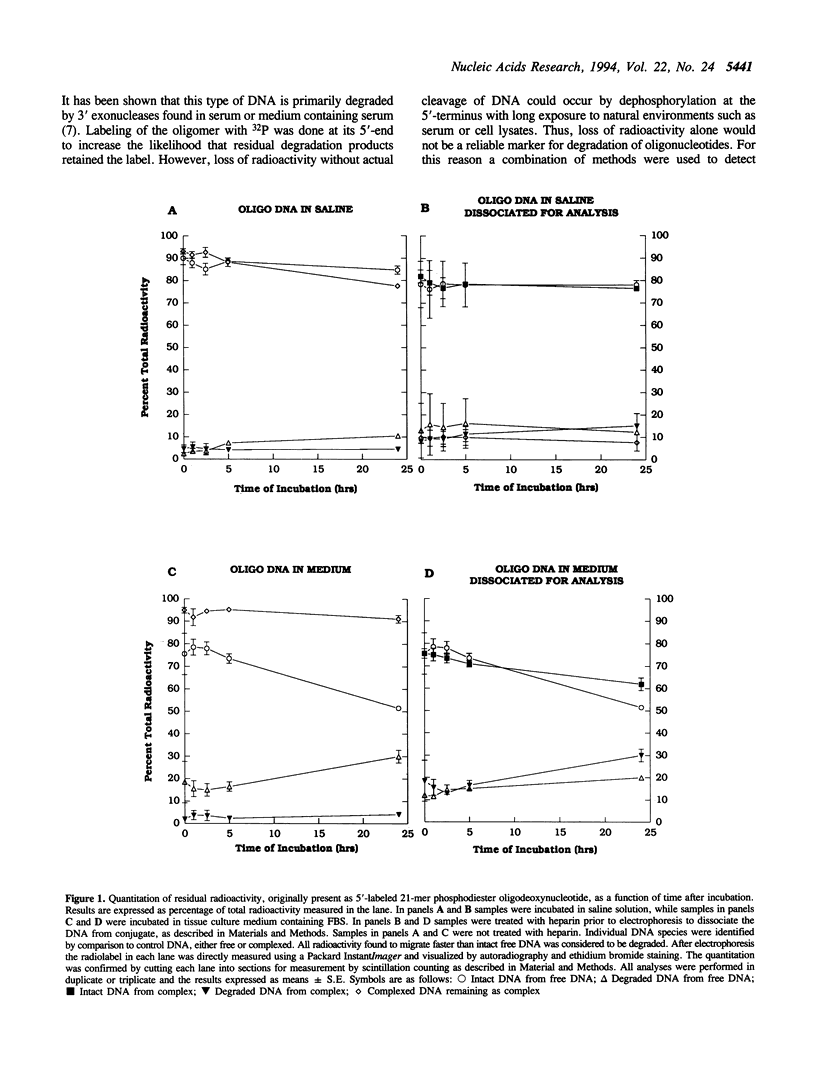
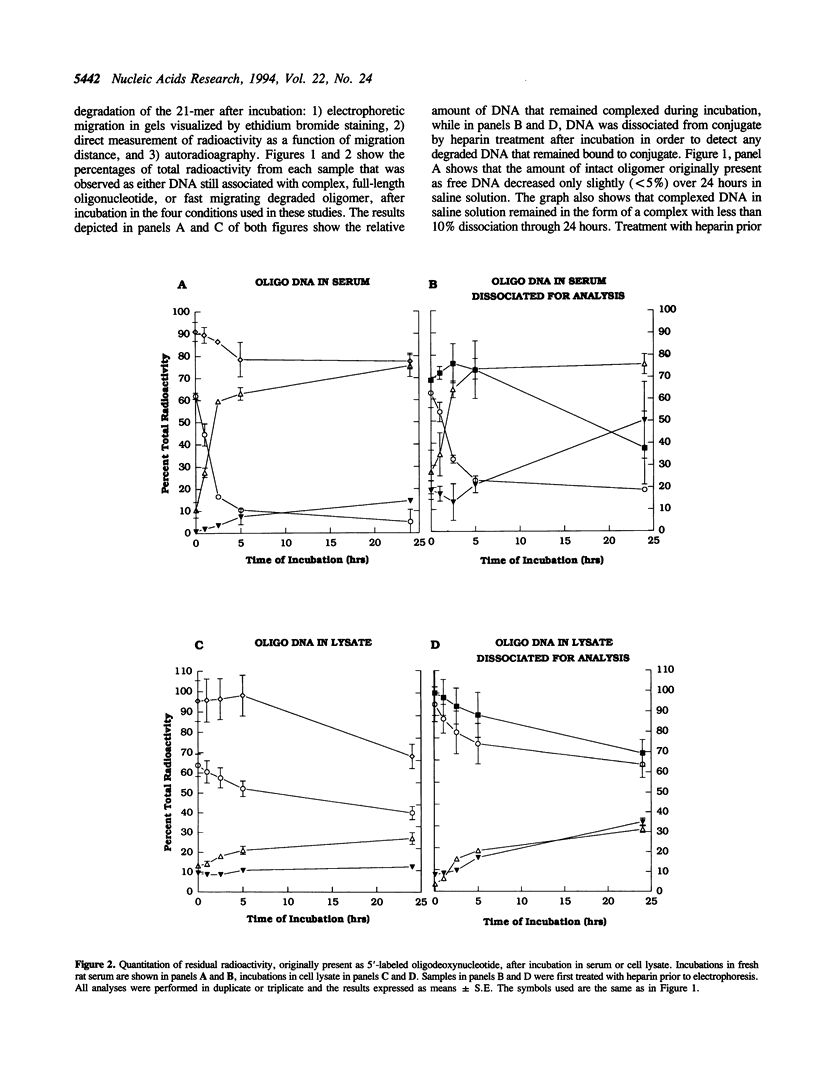
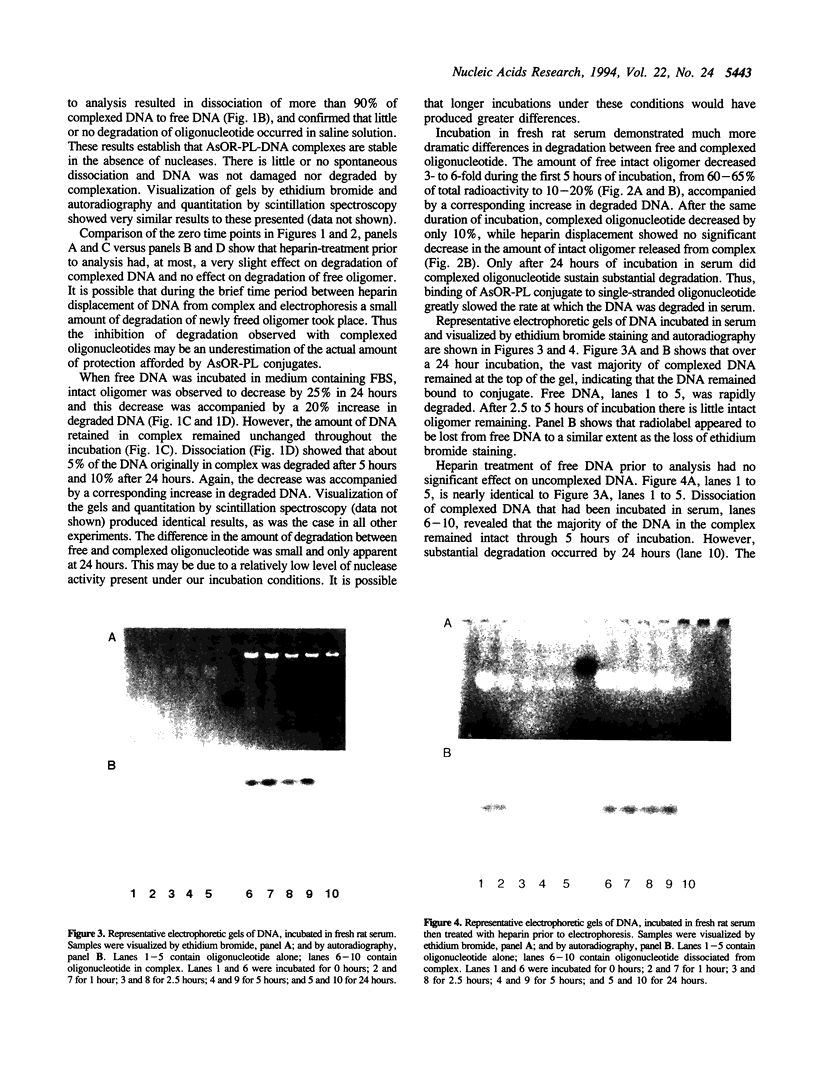
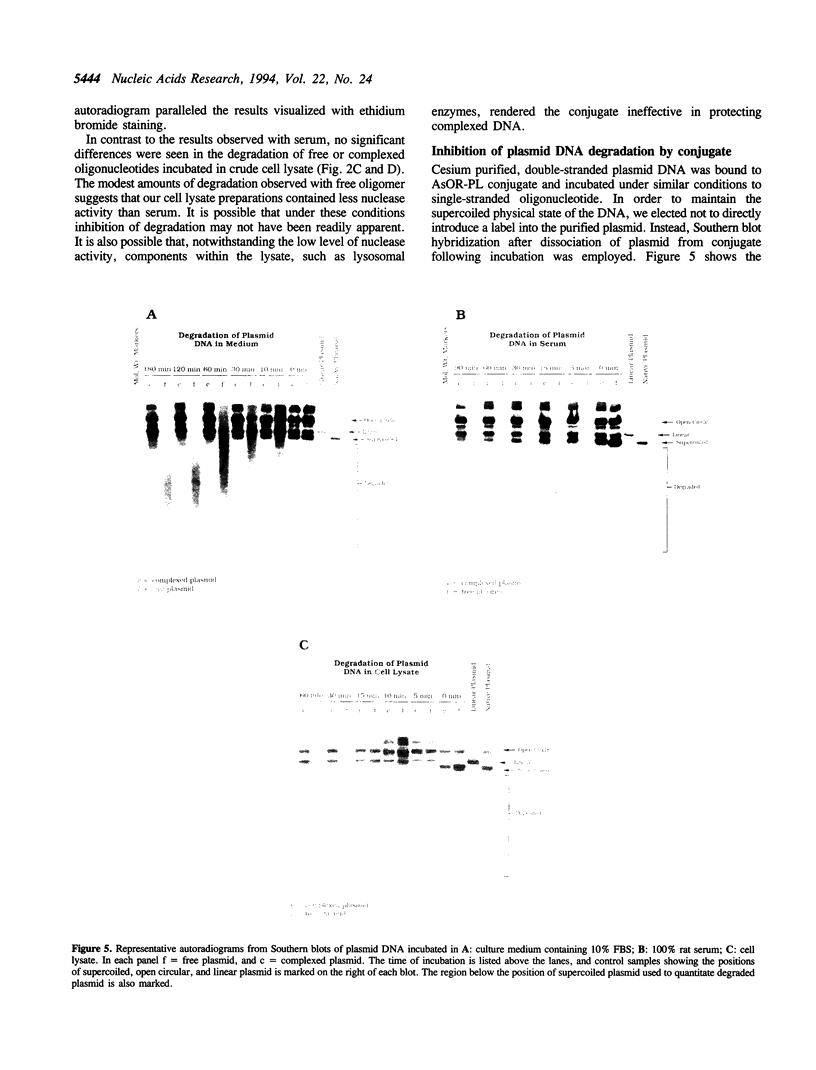
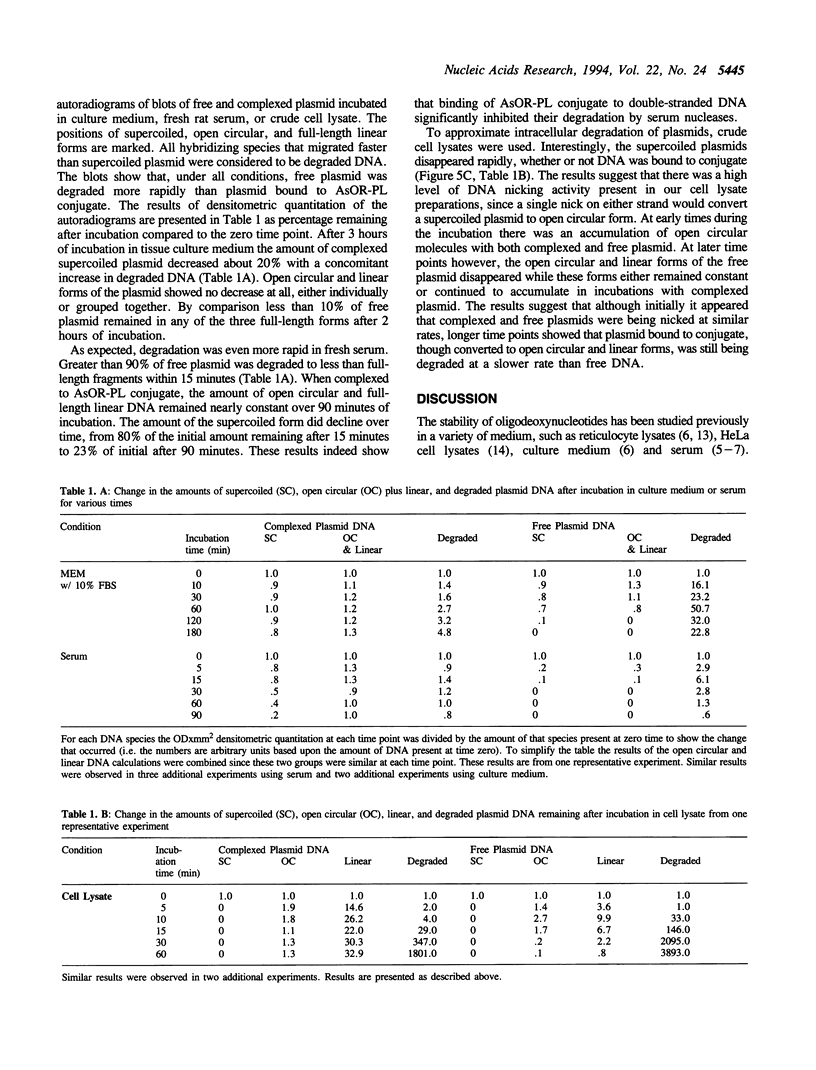
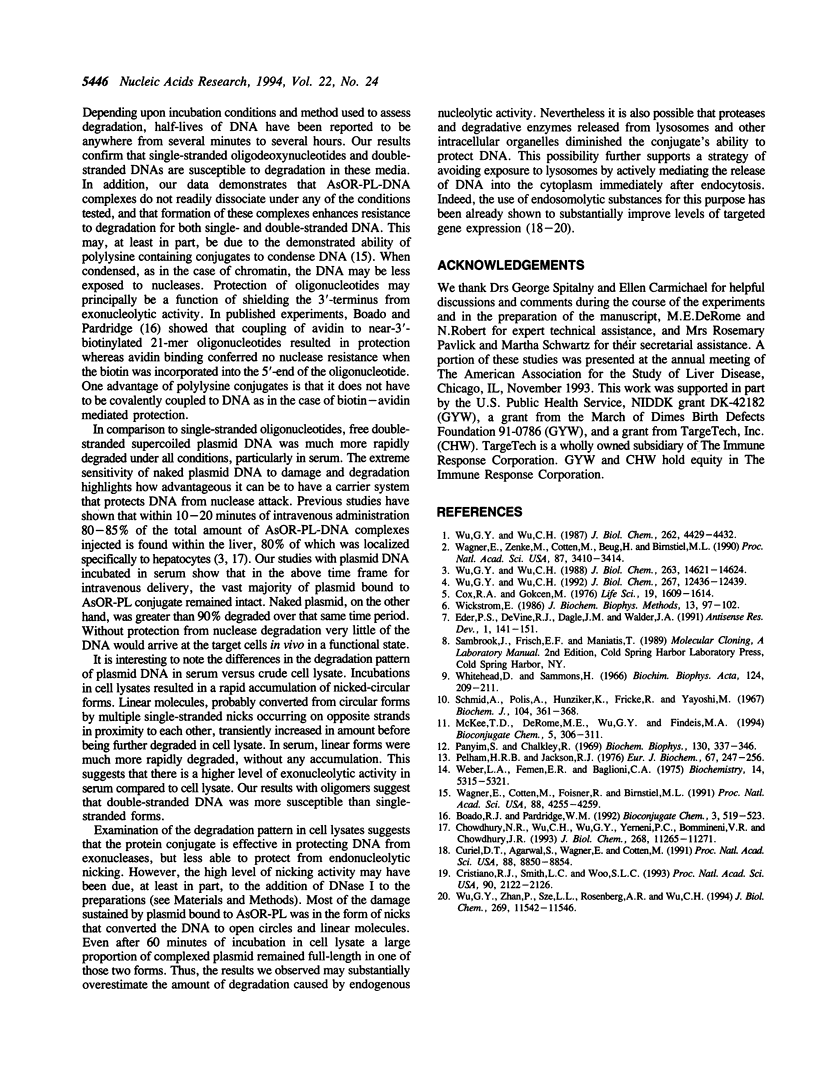
Images in this article
Selected References
These references are in PubMed. This may not be the complete list of references from this article.
- Boado R. J., Pardridge W. M. Complete protection of antisense oligonucleotides against serum nuclease degradation by an avidin-biotin system. Bioconjug Chem. 1992 Nov-Dec;3(6):519–523. doi: 10.1021/bc00018a010. [DOI] [PubMed] [Google Scholar]
- Chowdhury N. R., Wu C. H., Wu G. Y., Yerneni P. C., Bommineni V. R., Chowdhury J. R. Fate of DNA targeted to the liver by asialoglycoprotein receptor-mediated endocytosis in vivo. Prolonged persistence in cytoplasmic vesicles after partial hepatectomy. J Biol Chem. 1993 May 25;268(15):11265–11271. [PubMed] [Google Scholar]
- Cox R. A., Gokcen M. Comparison of serum DNA, native DNA-binding and deoxyribonuclease levels in ten animal species and man. Life Sci. 1976 Nov 15;19(10):1609–1614. doi: 10.1016/0024-3205(76)90108-9. [DOI] [PubMed] [Google Scholar]
- Cristiano R. J., Smith L. C., Woo S. L. Hepatic gene therapy: adenovirus enhancement of receptor-mediated gene delivery and expression in primary hepatocytes. Proc Natl Acad Sci U S A. 1993 Mar 15;90(6):2122–2126. doi: 10.1073/pnas.90.6.2122. [DOI] [PMC free article] [PubMed] [Google Scholar]
- Curiel D. T., Agarwal S., Wagner E., Cotten M. Adenovirus enhancement of transferrin-polylysine-mediated gene delivery. Proc Natl Acad Sci U S A. 1991 Oct 1;88(19):8850–8854. doi: 10.1073/pnas.88.19.8850. [DOI] [PMC free article] [PubMed] [Google Scholar]
- Eder P. S., DeVine R. J., Dagle J. M., Walder J. A. Substrate specificity and kinetics of degradation of antisense oligonucleotides by a 3' exonuclease in plasma. Antisense Res Dev. 1991 Summer;1(2):141–151. doi: 10.1089/ard.1991.1.141. [DOI] [PubMed] [Google Scholar]
- McKee T. D., DeRome M. E., Wu G. Y., Findeis M. A. Preparation of asialoorosomucoid-polylysine conjugates. Bioconjug Chem. 1994 Jul-Aug;5(4):306–311. doi: 10.1021/bc00028a004. [DOI] [PubMed] [Google Scholar]
- Panyim S., Chalkley R. High resolution acrylamide gel electrophoresis of histones. Arch Biochem Biophys. 1969 Mar;130(1):337–346. doi: 10.1016/0003-9861(69)90042-3. [DOI] [PubMed] [Google Scholar]
- Pelham H. R., Jackson R. J. An efficient mRNA-dependent translation system from reticulocyte lysates. Eur J Biochem. 1976 Aug 1;67(1):247–256. doi: 10.1111/j.1432-1033.1976.tb10656.x. [DOI] [PubMed] [Google Scholar]
- Schmid K., Polis A., Hunziker K., Fricke R., Yayoshi M. Partial characterization of the sialic acid-free forms of alpha-1-acid glycoprotein from human plasma. Biochem J. 1967 Aug;104(2):361–368. doi: 10.1042/bj1040361. [DOI] [PMC free article] [PubMed] [Google Scholar]
- Wagner E., Cotten M., Foisner R., Birnstiel M. L. Transferrin-polycation-DNA complexes: the effect of polycations on the structure of the complex and DNA delivery to cells. Proc Natl Acad Sci U S A. 1991 May 15;88(10):4255–4259. doi: 10.1073/pnas.88.10.4255. [DOI] [PMC free article] [PubMed] [Google Scholar]
- Wagner E., Zenke M., Cotten M., Beug H., Birnstiel M. L. Transferrin-polycation conjugates as carriers for DNA uptake into cells. Proc Natl Acad Sci U S A. 1990 May;87(9):3410–3414. doi: 10.1073/pnas.87.9.3410. [DOI] [PMC free article] [PubMed] [Google Scholar]
- Weber L. A., Feman E. R., Baglioni C. A cell free system from HeLa cells active in initiation of protein synthesis. Biochemistry. 1975 Dec 2;14(24):5315–5321. doi: 10.1021/bi00695a015. [DOI] [PubMed] [Google Scholar]
- Whitehead P. H., Sammons H. G. A simple technique for the isolation of orosomucoid from normal and pathological sera. Biochim Biophys Acta. 1966 Jul 27;124(1):209–211. doi: 10.1016/0304-4165(66)90336-9. [DOI] [PubMed] [Google Scholar]
- Wickstrom E. Oligodeoxynucleotide stability in subcellular extracts and culture media. J Biochem Biophys Methods. 1986 Sep;13(2):97–102. doi: 10.1016/0165-022x(86)90021-7. [DOI] [PubMed] [Google Scholar]
- Wu G. Y., Wu C. H. Receptor-mediated gene delivery and expression in vivo. J Biol Chem. 1988 Oct 15;263(29):14621–14624. [PubMed] [Google Scholar]
- Wu G. Y., Wu C. H. Receptor-mediated in vitro gene transformation by a soluble DNA carrier system. J Biol Chem. 1987 Apr 5;262(10):4429–4432. [PubMed] [Google Scholar]
- Wu G. Y., Wu C. H. Specific inhibition of hepatitis B viral gene expression in vitro by targeted antisense oligonucleotides. J Biol Chem. 1992 Jun 25;267(18):12436–12439. [PubMed] [Google Scholar]
- Wu G. Y., Zhan P., Sze L. L., Rosenberg A. R., Wu C. H. Incorporation of adenovirus into a ligand-based DNA carrier system results in retention of original receptor specificity and enhances targeted gene expression. J Biol Chem. 1994 Apr 15;269(15):11542–11546. [PubMed] [Google Scholar]




